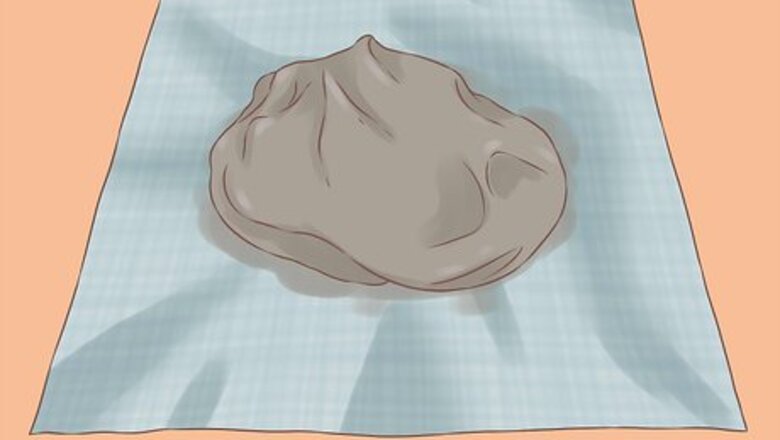
views
Molding Clay by Hand
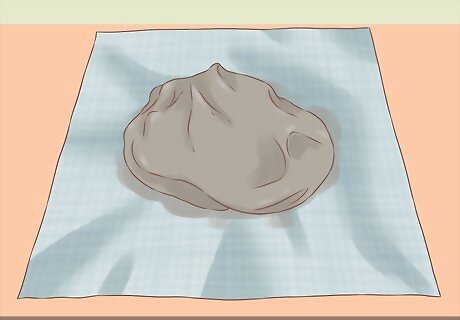
Prepare your clay. Good clay is soft enough to be worked with by hand straight out of the box or bag. However, by kneading the clay you will make it more pliable and remove any air bubbles and debris. This process of kneading and preparing clay is known as wedging. Place a lump of clay on a porous surface, such as concrete or canvas. Using your palms, press and roll the lump toward you. Pick up the clay, set it back down, and again press and roll it toward you. Repeat this process until the lump of clay is uniform in consistency (perhaps 50 times).
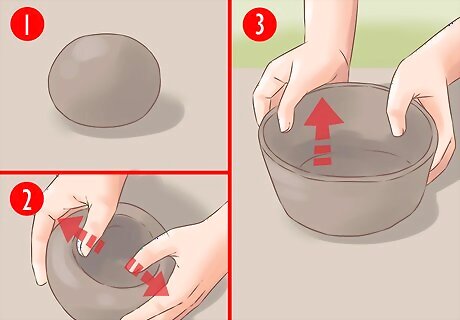
Use the pinch method. Probably the most ancient and easy way to mold clay is by pinching it with your fingers. Once your clay has been wedged, press and pull at it with your fingers to form it into a desired shape. For instance, to shape a simple bowl using the pinch method: Take a lump of your clay and roll into a ball. Set the ball down on your work surface, pushing it down slightly to hold it in place. Make a small impression in the center of your ball. This will make the opening of the bowl. Pull the clay horizontally away from the center hole to widen the bowl. Pinch the sides of the clay and pull them upwards to form the sides of the bowl. Continue to pinch and pull until the bowl is the desired size and shape.

Try coiled construction. Forming objects from coils of clay allows more versatility, but also requires nothing more than your hands. Start with a lump of clay that has been wedged properly. Separate the clay into several smaller lumps of about the same size. Take each lump and roll it into a ball. Using your palms, push down on each ball and roll it back and forth. This process will start to form a long thin coil. Move your palms horizontally and continue rolling each coil to make it longer. Stop when your coils are the desired thickness. They can be thicker or thinner depending on the form you want to make (use smaller coils to make a thinner-walled bowl, for instance). Shape a coil into a desired shape. For instance, to make a round bowl, shape the coil into a circle, and pinch the ends together to close it. Stack coils on top of each other to make the object higher. Use progressively small coils to close off an object (for instance, to make the bottom of a bowl). You can also start with a slab of clay to form the bottom of an object (such as a small flat circle to serve as the bottom of a bowl). Gently press on the coils to join them together and to smooth the sides of your object.
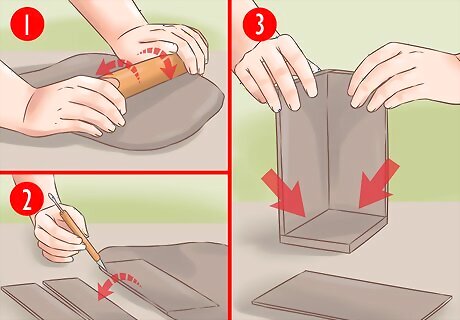
Form slabs. You can also form clay objects from flat sheets of clay in various shapes. Fuse the shapes together to make your object. For instance, to make a clay box: Take a lump of wedged clay and roll it into a flat sheet using a rolling pin or similar tool. Use a knife or semi-sharp object to cut slab into the shapes you desire. To make a box, cut the clay sheet into squares or rectangles of the same size. You can also use another object as a guide when cutting shapes. For instance, take a square sheet of paper, lay it on your clay sheet, and cut the clay by tracing around the edges of the paper using a knife. Once you have all of your shapes cut, score them by making many small cuts along their edge. This will create a good surface to fuse them together. Set one scored edge against another. Gently press using your hands or a small tool to join them together and smooth the edge out. Repeat until all of your shapes are joined together to make the object.

Use an extruder. An extruder is a tool that can make more uniform coils and/or produce them more quickly. Extruders can be purchased from ceramic supply stores and catalogues. Place a lump of wedged clay inside the extruder. Using a lever, you will then push at the clay to force it through an opening of a desired shape, such as a circle or square. This will form coils or slabs that you can use to shape into various objects.
Using a Wheel
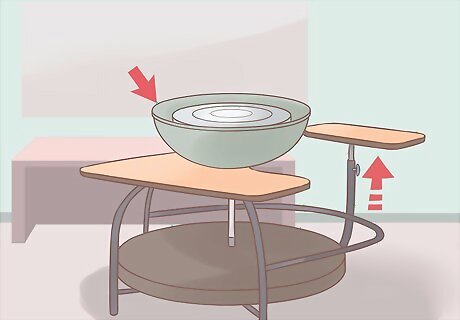
Set up your wheel. Potter’s wheels may be either manual or electric. Prepare the wheel before molding your clay by: Setting the right rotation direction (counter-clockwise if you are right-handed, clockwise if you are left-handed). Making sure the splash pan is installed. This will catch any clay that falls or spins off as you shape the clay. Adjusting the height of the wheel so that is comfortable for you to sit at and use. Plugging your wheel into a power source, if applicable. Checking to make sure that your wheel spins properly before using.
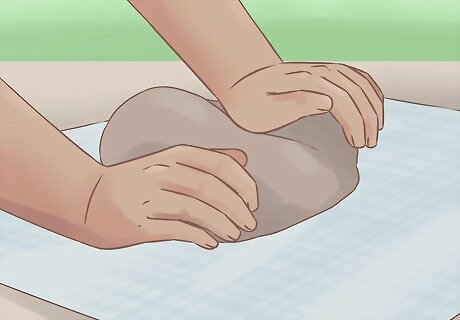
Prepare your clay. Wedge your clay by setting it on a porous surface and pulling it toward you as you push down. Repeat this process until your clay is pliable and uniform in consistency.
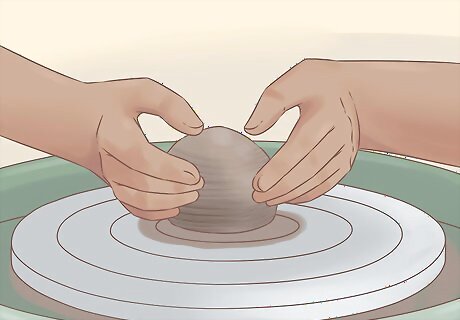
Attach your clay to the wheel. Take a lump of clay that has been formed in to a rough ball shape. Place it firmly in the middle of the wheel surface (known as the bat).
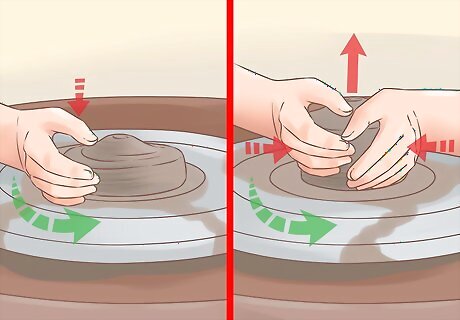
Center the clay. Using dry hands, tap at the clay to move it to the very center of the bat. Start moving your wheel slowly, and tap at the lump of clay to make sure that it is uniformly in the center, with no large portions sticking out.
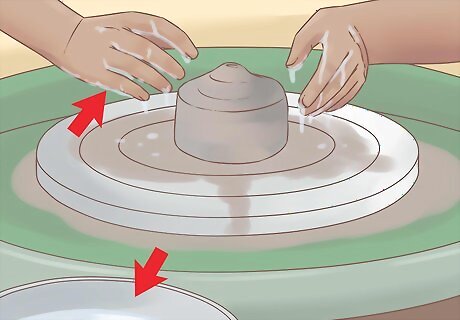
Wet your hands. Once your clay has been centered, it is ready to be molded. When using a wheel, it is important to work with wet hands. This helps form a slick surface on the clay (known as a slurry or slip) as it turns, making it easier to mold. Keep a bowl of water near your wheel that you can dip your hands into as needed while you mold the clay.
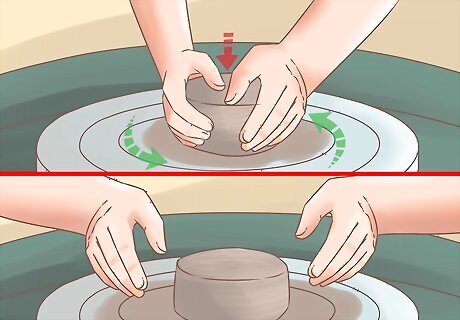
Shape a rough form. Start running the wheel at a higher speed. Wrap your hands around the lump and push slightly as it spins. This will shape the clay into the initial form. With a bit of practice, you will learn how to push the clay to get it into the shape you desire. To make a relatively tall object, like a mug, keep the clay close to the center as you push at it. This will force the clay upwards. To make a relatively wide object, like a low bowl, first push the clay slightly forward to help smooth the sides. Then, push downwards as the clay spins to make the form wider.
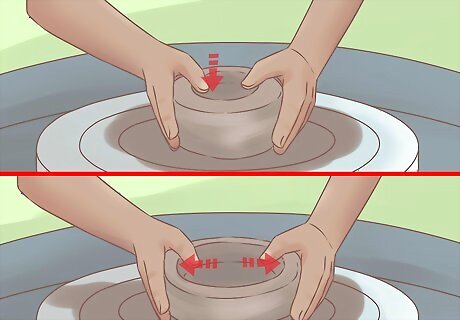
Open the clay. Place your fingers in the middle of your lump as it spins. This will create an initial impression. Push and pull with your fingers, whole hand, or a tool in order to get the opening into the size and shape needed for your object. Keep the opening narrow for a relatively tall object, such as a mug or jug. Pull at the clay to widen the opening for objects such as bowls and plates.
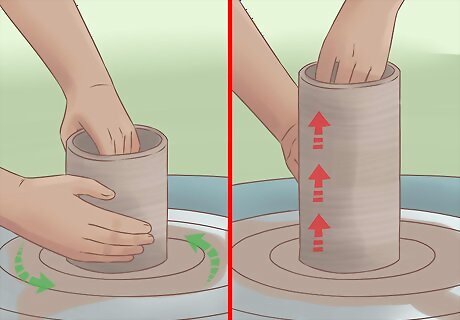
Raise the clay. Hold your fingers or another tool against the clay as it spins, working from both the inside and outside of the opening. This will thin the sides of the clay form. Keep working until you reach the desired shape. For tall forms, like jugs or mugs, you may want to pull slightly upwards.
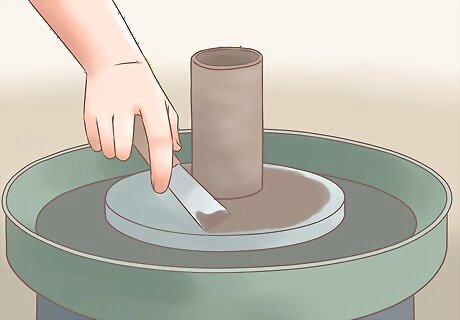
Remove the clay from the wheel. Clear away any excess clay from the bat of the wheel. Then slide a stretched out wire or a spatula underneath the bottom of your object. This will separate it from the wheel. Using a spatula or another flat surface, gently lift the object off of the wheel and leave it in a safe place to dry.
Improving Your Craft
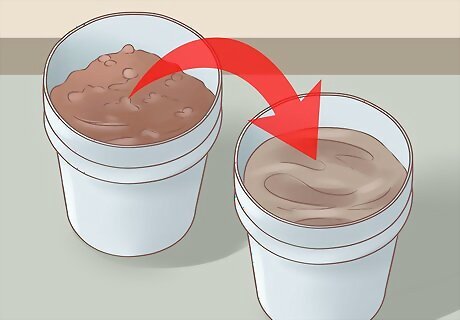
Mix clays to improve consistency.Ceramic and art suppliers usually stock several kinds of clay. You can mix various kinds of clay together if you find that a certain kind is too difficult to work with. For instance, add coarser clay to clay that is too sticky, or more pliable clay to another variety that is too coarse to work with.
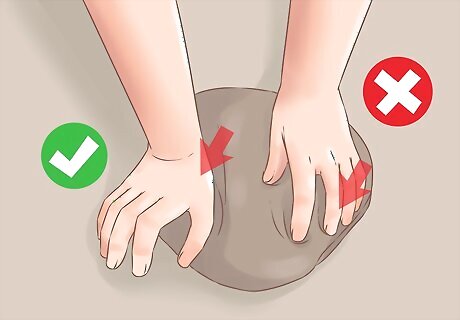
Keep your fingertips out of the clay when kneading. It is important to work with your palms when kneading clay. If you push at it with your fingertips, this can create impressions in the clay that can form air pockets as you continue to knead. These air pockets can ruin a form when you try to mold it.
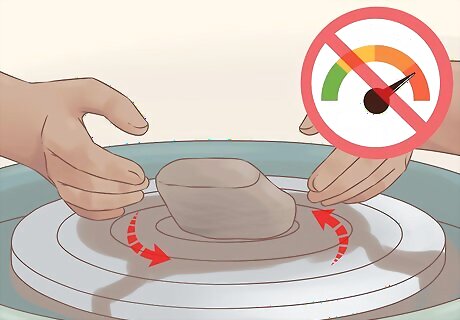
Don’t set the wheel speed too high. Start your wheel slowly. This helps to ensure that your clay is well-attached to the bat. As you shape and raise the form, take care not to spin the wheel so fast that it warps the clay. Setting an appropriate speed will also prevent your clay from flying off your wheel, ruining your project.

Anchor your arms. If your arms wobble as you shape the clay, the form will become warped or slide off-center. To prevent this from happening, anchor your arms by holding your elbows against your knees as you work. Keep your arms firm as you shape and raise the clay.
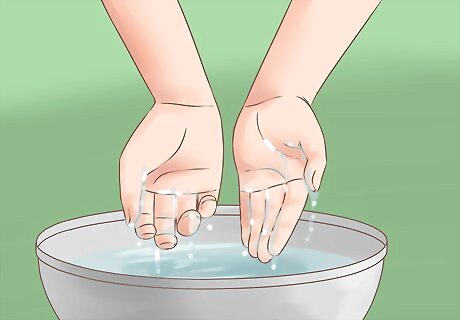
Keep your hands and the clay wet. If your hands or the clay become too dry while molding it, your form may become misshapen or ruined. The goal is to keep a wet, slick surface as you mold the clay. Make sure to wet your hands before starting to mold the clay, and wet them again any time they start to become dry.
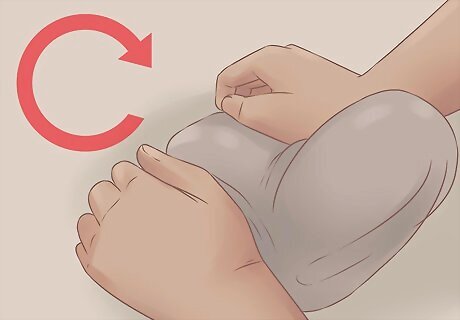
Re-wedge your clay if needed. If you are molding clay and something goes wrong, you can start over. However, you must remove the clay from your wheel or work surface and wedge it again. Knead in more clay if you need to alter its consistency (for instance, if it is too wet).
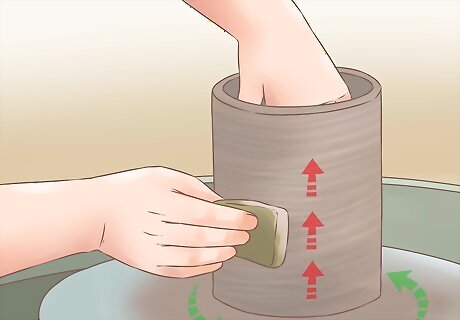
Try different tools to raise and shape clay. Your hands and fingers alone are often enough to mold clay into desired forms. However, you may find that various tools make molding easier, or just give you more options. For instance, using a sponge instead of just your fingers to raise clay on a wheel may allow you to make smoother or thinner sides. As you practice, don’t be afraid to experiment with all sorts of objects to help mold your clay.
















Comments
0 comment